A very very nice Japanese Pavilion. Instead of presenting us his vision of the future of architecture as other countries do, the curator of the pavilion, Terunobu Fujimori, highlighted two art movements that have been active for over a decade in Japan – the architecture of Terunobu Fujimori and ROJO (the Roadway Observation Society.)
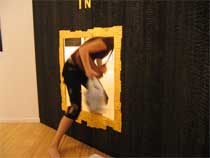
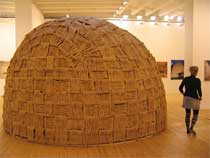
Everyone had to remove their shoes to walk through a square hole in a wooden wall to enter the exhibition room paved in tatami mats.
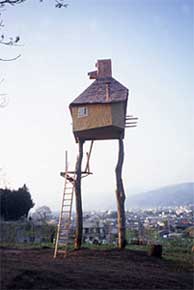
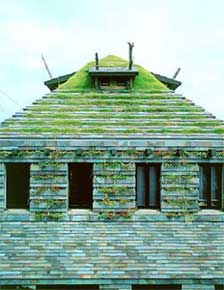 Takasugi-an (Too-High Teahouse) and Tanpopo House (Dandelion House) 1995
Takasugi-an (Too-High Teahouse) and Tanpopo House (Dandelion House) 1995
Fujimori, sometimes called the world’s only “surreal architect”, uses traditional materials such as earth, stone, wood, charcoal, tree bark and mortar. Adding living plants in his buildings to express his interest in the relationship between architecture and nature (pots of chives sway in the breeze on the roof of the Chive House while the roof of Single Pine House has a pine tree growing on it.)
Fujimori works with the Roadway Observation Society to search out interesting urban scenes around the world that no-one has paid attention to before. ROJO regards these scenes as expressions of the city’s unconscious.
The ROJO society was created in 1986 by Genpei Akasegawa (artist and novelist), Terunobu Fujimori (architectural historian), Shinbo Minami (illustrator), Joji Hayashi (writer) and Tetsuo Matsuda (editor).
ROJO Kansatsugaku means “Roadway observation”. It is a field of study that takes in everything that can be observed while walking the streets. Its members go out, camera in hand, in search of things that are out of place, odd, unusual or mysterious. They focus on forms that are unconsciously created by city-dwellers or traces left by natural phenomena, adding their thoughts on what they might represent or stand for.
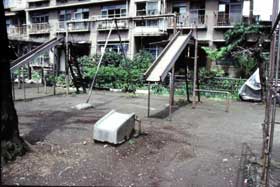
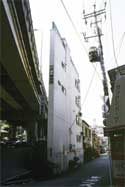 World’s Best Slippery Slide, Tokyo and Razor House, Tokyo
World’s Best Slippery Slide, Tokyo and Razor House, Tokyo
The two images below illustrate Tokyo Plan 2101, a scenario imagined by Terunobu Fujimori. “During the 21st century, the sea level has continued to rise due to global warming. Venice, then Tokyo, have been covered with water. The trickiest problem is not to control the release of carbon dioxide but to reduce the large quantities already in the air. Terunobu came up with a plan in 2001. He presented it the Biennale of Architecture in Venice in 2006 but reports from the time indicate that his plan was “ridiculed as a fantasy.”
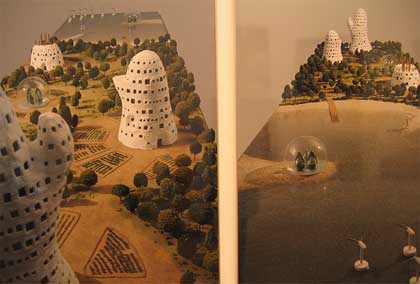
Terunobu looked at the history of the planet rather than at the latest advances in science and technology, he then realized that a large amount of CO2 surrounded the Earth in its infancy. Later it was stabilized in two ways: it was made into coral by the action of coral polyps in the ocean and turned into wood by photosynthesis.
His proposal called for new cities to be built in place of the old cities that are now under water using these two materials. High buildings were to be constructed of wood instead of steel and isolated with plaster on the outside. THe plaster was to be made of coral. Wood returns to CO2 when it roots or burns. When used as a construction material, the CO2 remains inside it.”
My images on flickr. Images from archiportale, forgemind and designboom. More on Fujimori’s Works
